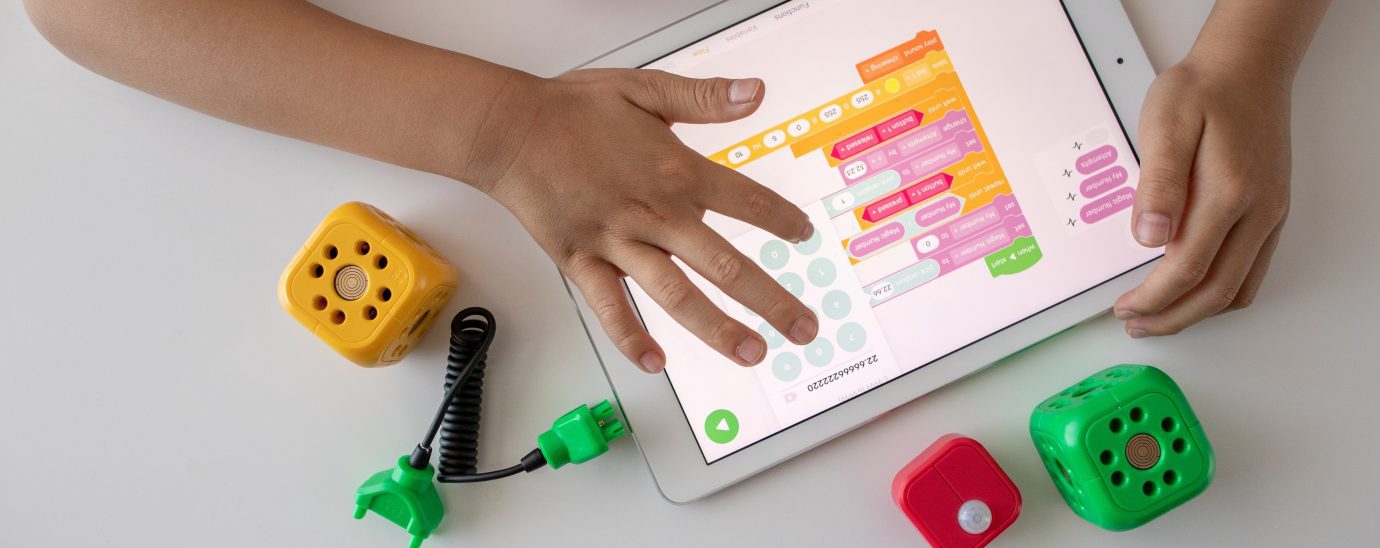The importance of edtech in the early years sector

Technology has become an operational mainstay across a multitude of industries – helping businesses, education establishments, governments, and charities to streamline their processes and enhance communications. When it comes to the early years education sector, this is no different. Chris Reid, CEO and founder of Connect Childcare, shares his thoughts on the intrinsic link between technology and the impact it has not only on improving child development opportunities, but boosting staff wellbeing and developing better relationships with parents.The technology landscape in early years education
Whether it be businesses, local authorities, universities, or nurseries, technology has continued to form a crucial part of the day-to-day over the last 18 months. And while digital solutions were in existence well before the 2020 pandemic, they’ve arguably never been in greater demand than they are today.
With the multiple lockdowns and social distancing measures in place throughout both this year and last, society’s reliance upon technology has evolved in tandem. When looking at the education sector, this has been deployed to facilitate remote working, ensure that operations continue to run smoothly, and keep communication flowing between both employees and customers.
But within the early years specifically, many settings in the UK remained open throughout the pandemic – with nursery managers and practitioners continuing to look after vulnerable children and those of keyworkers. Of course, this saw the implementation of new health and safety measures, but it also, for many, catalyzed the integration of technologies that could not only help to contribute to increased physical safety – such as contactless payments and virtual drop-offs and pick-ups – but also alleviate the admin burden for staff.
In truth, no one organization has been exempt from having to demonstrate agility, adaptability, and ability to embrace change.
Digital transformation has taken a different guise for all businesses – with it being a bigger leap for some more than others – and for many, it accelerated plans that were already in the pipeline.
But while technology adoption may have elevated within the context of the pandemic across the board, for the early years childcare industry, long-term digital solutions can also help with extending the child development process into the home and strengthening relationships with parents – alongside also helping staff to feel more fulfilled and supported within their roles.
Using cloud-based solutions to diversify the learning experience
For early years professionals, there can never be enough hours in the week to get everything done – every day has a busy schedule and supporting the children with their learning journey must naturally take precedence.
That’s why when it comes to the other responsibilities nursery staff must also find the minutes for – whether that be parental invoicing, financial reporting, managing staffing resource, or logging little ones’ milestone moments – technology can be a real ‘friend’ and enabler.
For instance, a child’s learning doesn’t simply take place during the time they’re at nursery, it happens 24/7. And having technology in place that allows practitioners to quickly take a photo, add an annotation and share key moments with parents not only helps families to get a view of how their youngster is getting on, but it allows them to reciprocate and complement this activity in the home.
As a result of extending children’s learning outside the childcare environment, it helps to employ a holistic approach to education and equips early years professionals with the ‘bigger picture’. A child may, for example, demonstrate different behaviours, characteristics, or emotions when with their family, and if parents are able to contribute to their little one’s education log, these vital observations aren’t lost.
While there’s been lots in the tech news headlines about how software – such as Microsoft Teams and Zoom – is helping workforces and their customer bases keep connected, little has been uttered about the app-based tools that are bridging this same gap for practitioners and parents.
In truth, technology has the ability to close the education loop and unite parents and practitioners in helping their children to develop.
The impact on staff wellbeing
Being able to communicate effortlessly with parents is one of the many gateways that technology opens up for practitioners – another key one being the removal of the administration headache.
When we speak about technology, it’s important to stress the importance of it not replacing but augmenting the human-side of early years education.
Management software that houses contact records, invoices, staffing details, resource allocation, grant funding, and child observations all in one centralized system, not only enables childcare settings to ditch any paper-based processes – which are more prone to human error or data loss – but also helps to automate admin-heavy tasks.
For nursery managers, supporting their staff and ensuring the smooth running of the business is vital. And given that sending debt reminders and manually reconciling bills and grants can take hours of tricky calculations, why not look to technology to help?
The same can be said for practitioners. Their passion lies in working with children and helping them to develop, not feeling distracted by paperwork that takes them away from their role as teachers.
This is where the wellbeing element can be witnessed, too. If managers have more time to run the business and develop their personnel – whether through training courses or dedicated wellbeing sessions – and practitioners feel supported by their manager, this fosters a positive working and learning environment.
But the support element also extends to parents. If nursery workers feel backed by management and connected with the parents of the children in their care – by being informed of little ones’ progress updates at home – they will, arguably, feel a greater sense of satisfaction in their roles.
Heading towards a paperless future
It’s no secret that technology can help organizations to ditch the filing cabinet and implement a more streamlined, accessible-from-anywhere solution. And when it comes to the early years sector, and today’s current climate, this has perhaps never been more crucial.
The world is becoming an increasingly busier place – with people’s daily lives flying by in the blink of an eye with work and personal commitments. Therefore, technology is a massive enabler in allowing human beings to choose the most convenient time to reply to an email, review a child’s nursery report, or research learning resources.
The convenience argument is only one side of the coin though, data security and accuracy are two major considerations for early years. If nursery data is securely encrypted in the cloud, it’s not only at less of a risk of being misplaced, but it’s much safer – with only designated, authorized users being able to view any sensitive information.
Of course, the environmental impact of using too much paper should be taken into account too, and the reality is that today’s age is very much a digital one – technology is omnipresent in people’s personal and professional lives – and it’s not going away any time soon.
READ MORE:
- Device management for edtech touchscreens
- Edtech: tackling educational inequality
- Lenovo: remote learning has made kids more digitally equipt beyond school
- Transforming the learning experience through VR
Ultimately, technology, when implemented and used correctly, has the power to facilitate more of the great work that early years professionals carry out every single day. It’s there to empower, enhance, and engage, and there’s never been a better time for tech and humans to work in harmony to help develop the world’s future generations.
For more news from Top Business Tech, don’t forget to subscribe to our daily bulletin!
